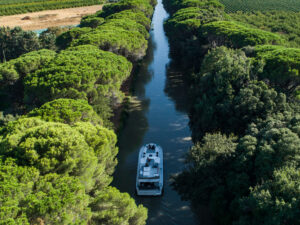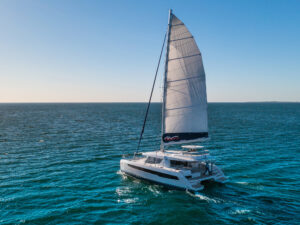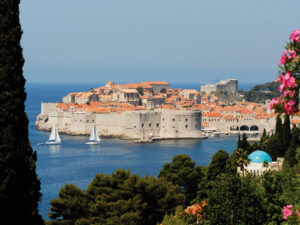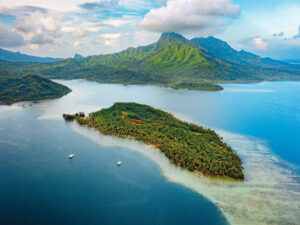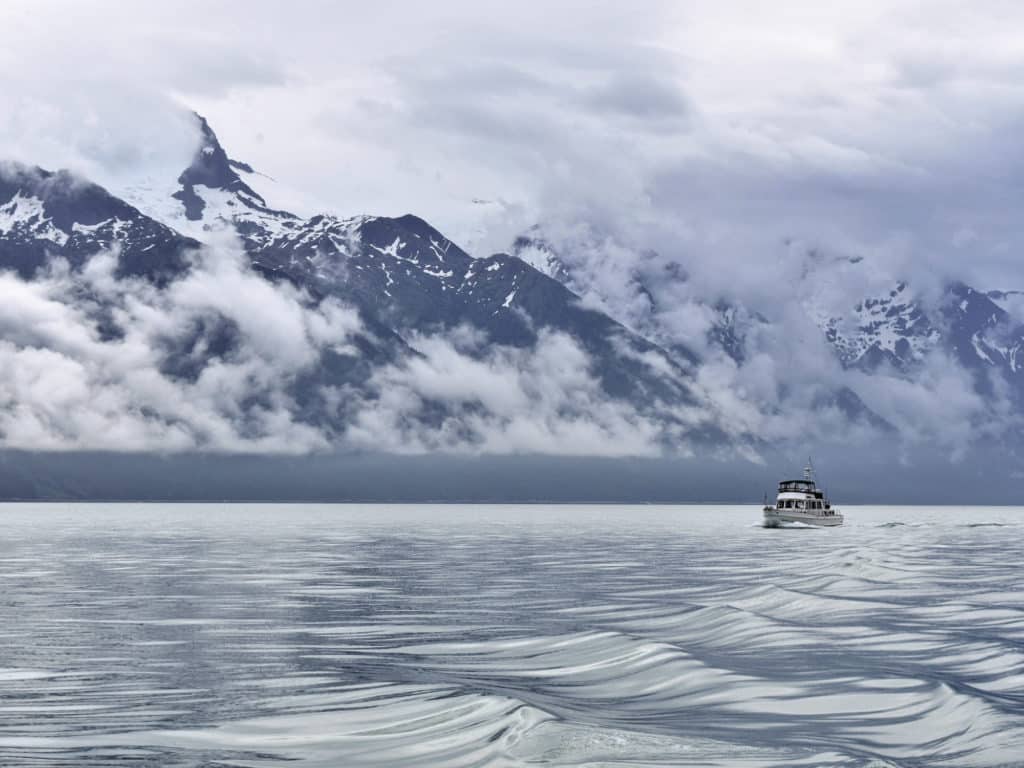
Jan Reyers tried to take it in stride when his father started calling him “my deviant son.” After all, his father had sailed until he was almost 70 years old, and Reyers had spent countless years sailing a Columbia 22 on Lake Superior. This was a family that lived by the wind. The mere thought of buying a boat without sails made Reyers, well, a wayward child.
The thing is, Reyers wasn’t a kid anymore. He’d spent years working for 3M, and when he took on a new role with the company in Minnesota, the job required dinners with clients. He wasn’t too keen about that—but, he thought, meeting with clients could be a lot of fun aboard a boat.
There was just one problem. “On a sailboat, that wouldn’t be too ideal,” Reyers says. “That was the first time we chartered in the Pacific Northwest, to see if we could adjust to a stinkpot—uh, I mean, a powerboat.”
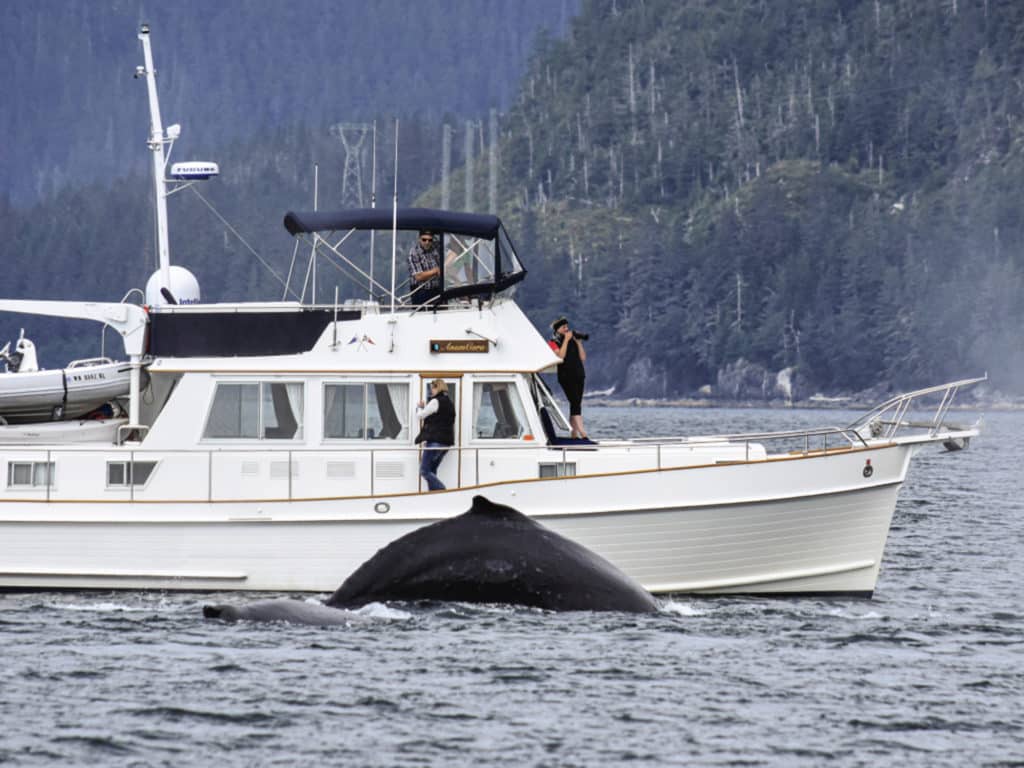
The thought process that Reyers went through happens in the minds of countless sailors as they move into middle age. After years of blissfully hoisting sails and rounding buoys, any number of factors can trigger the transition in thinking: a desire to do more long-distance cruising in retirement, back problems that make tacking and jibing a literal pain in the rear, or, as with Reyers, a job change that nudges the lifelong sailor to wander down the docks at the trawler section of the boat show for the first time.
“We have definitely found over the years that the trawlers we have here are a good transition boat for sailors. Especially with the Grand Banks boats, there is really good visibility from the helm. You feel connected with the water, as sailors do.
—Emmelina Mojica, Charter Manager, NW Explorations
What many of these sailors soon realize is that they don’t actually have to quit sailing. Instead, they can broaden their idea of boating to include sailing and powerboating alike.
Reyers, trying to suss out his options, started booking trawler charters with companies in the San Juan and Gulf islands of the Pacific Northwest. He and his wife tried an Ocean Alexander, and then an Ocean Trader. Along the way, they saw a Tollycraft—a cruising boat that was built in the Pacific Northwest until the 1990s.
“We liked the design of that and found one back in the Twin Cities,” Reyers says of the 1988 40-foot Tollycraft they ultimately purchased. “For the next eight years, we used the heck out of it on the St. Croix River. That taught us that we could survive with motors.”
Making the Mental Shift
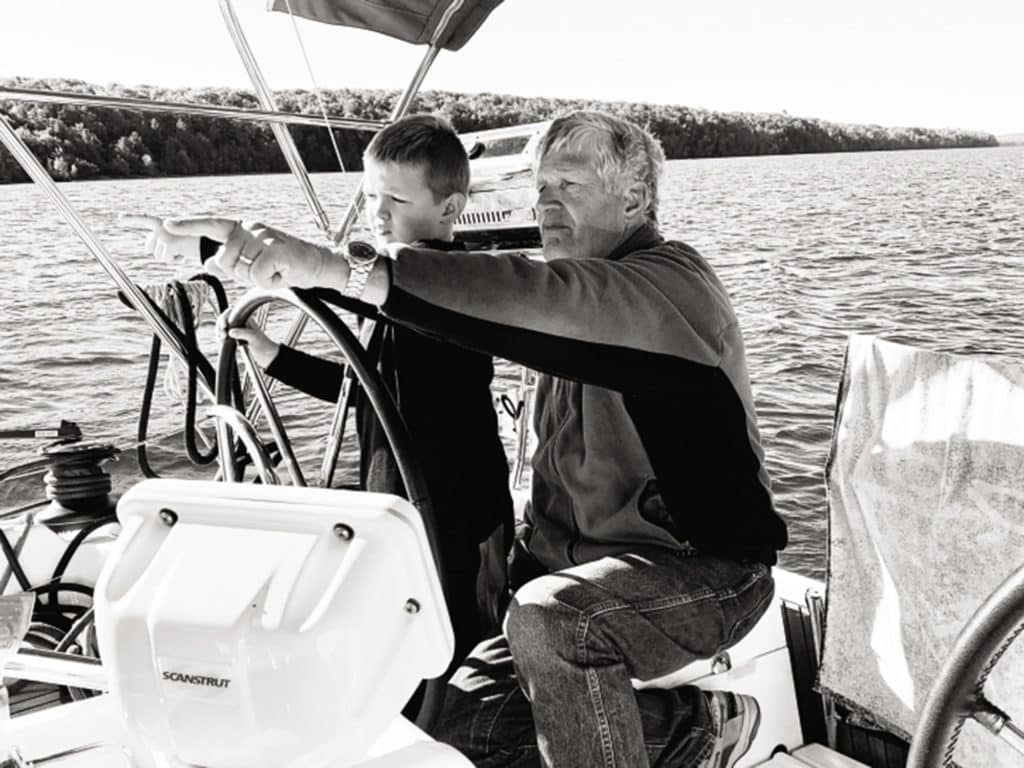
Reyers and his wife soon realized that they enjoyed different types of boating. Reyers still loves to sail—he regularly charters Beneteaus in Lake Superior’s Apostle Islands—but eventually, he outgrew the Tollycraft.
“When it started becoming time for retirement, the entertainment thing was out the window, and I was getting bored with the river,” he says. “We got kind of captured by the thought of Alaska, and we found NW Explorations. We had seen their fleet once when we were out there, and we were really impressed with it. When we saw that they had the flotilla in Alaska, we thought it might be a good way to go cruising without buying another boat.”
NW Explorations, founded in 2004, is a charter, sales and service company based in Bellingham, Washington. Its fleet is exclusively trawlers, and it regularly offers flotilla charters in destinations such as Desolation Sound and Alaska. The charter boats can be booked with or without captains, and the flotillas always include a lead boat with a US Coast Guard-licensed captain, a marine mechanic and a naturalist to help everyone.
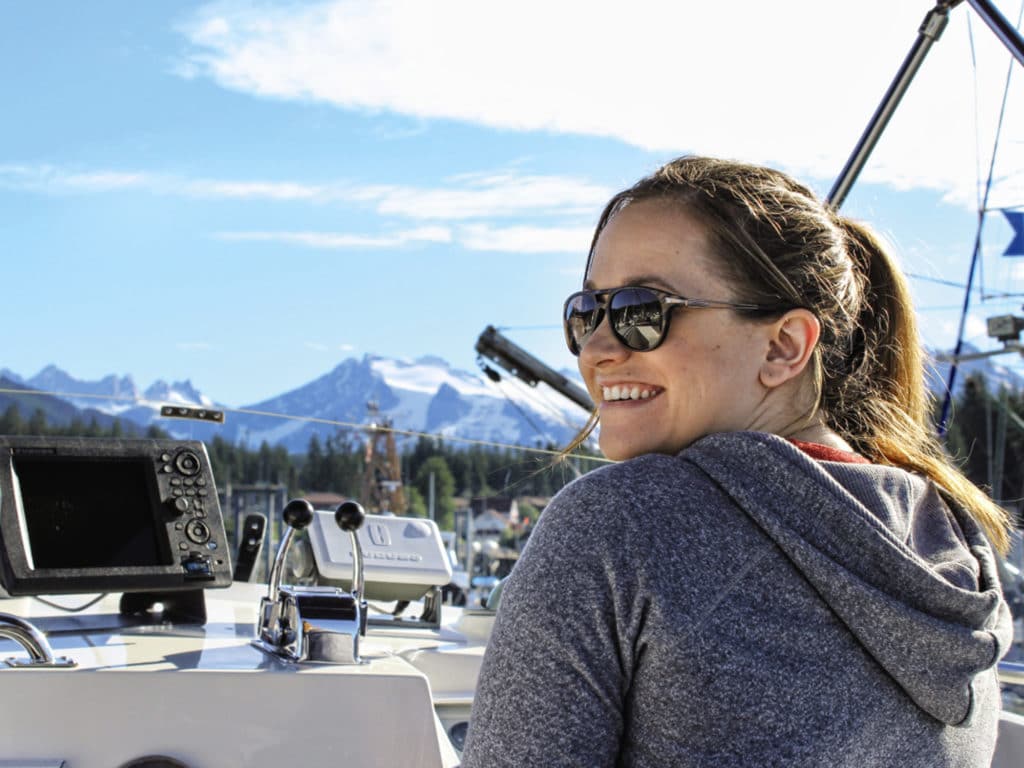
The flotillas visit some of the most stunning destinations for scenery and wildlife in US and Canadian waters. In Desolation Sound, boaters cruise beneath 7,000-foot-tall peaks. Boaters on the Princess Louisa flotilla typically see wildlife ranging from grizzly bears to eagles. The Alaska flotilla’s sights include orca and humpback whales, hot springs, glaciers, fjords, and more.
“We have definitely found over the years that the trawlers we have here are a good transition boat for sailors,” says Emmelina Mojica, charter manager at NW Explorations. “They just go slow and enjoy the ride. And especially with the Grand Banks boats, there is really good visibility from the helm. You feel connected with the water, as sailors do.”
The company recommends that sailors take about three hours of boat-maneuvering lessons to adjust from single-engine maneuvering to handling a twin-screw vessel.
“Once they do that, we find that they are really very comfortable; it actually ends up being easier than what they’re used to,” Mojica says. “It just takes a little bit of time for them to get used to it.”
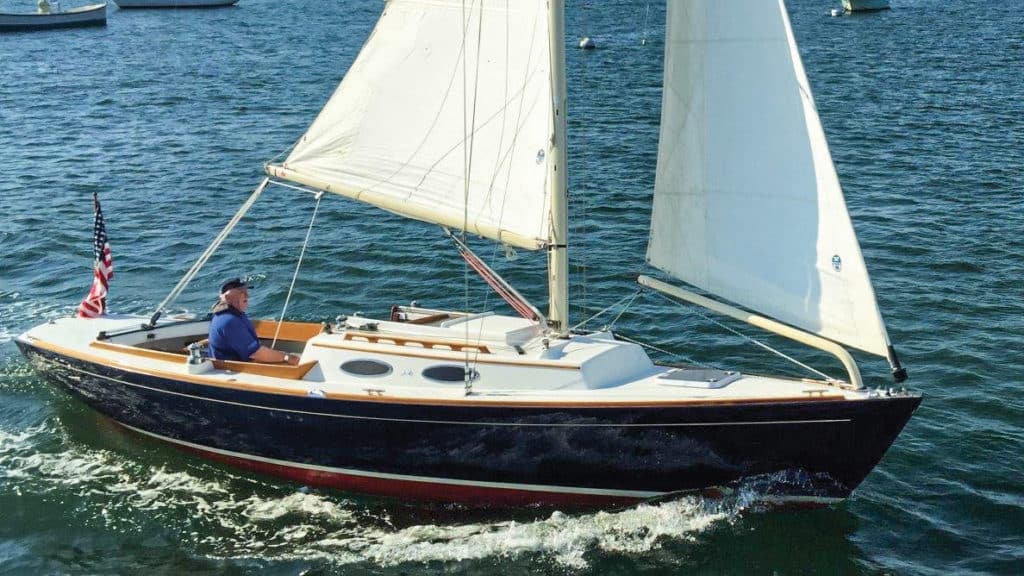
That’s exactly the experience Reyers had in 2015, when he and his wife chartered a Grand Banks 42 for a flotilla cruise in Alaska. They liked it so much that they did another one, on a Grand Banks 46, in 2017, with an extra stateroom for their son and daughter-in-law to join them.
“It’s a very different experience from sailing,” he says. “Out there, you are going to be motoring anyway if you want to go up the channels to get to the fjords and glaciers. I’ve always been a guy who likes to go explore and weasel into places that are hard to get to. That was one reason we wanted to go to Alaska, just to go into gunkholes and get from one point to another in a reasonable period of time without having to rely on the wind. It’s better for that.”
John McColloch has found the same thing to be true. He’s a lifelong sailor who started out on Penguins when he was 8 years old (learning that he could sail those boats backward hooked him for life). He went on to own a Sonar class one-design, a 28-foot Alerion Express sloop, a J/42, a J/105 and his current sailboat, another 28-foot Alerion Express sloop.
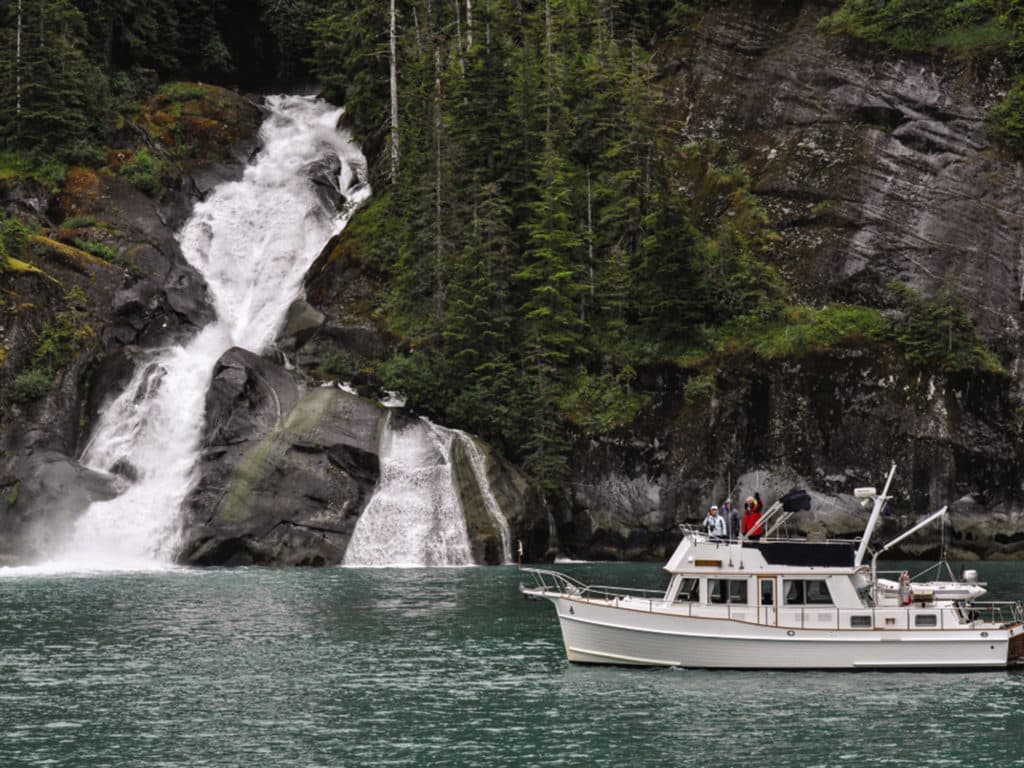
But today, he is also a powerboat owner. His interest in owning multiple kinds of boats took serious hold in 2004, when he bought a 2001 Offshore 48 Sedan.
“Why did I go to the dark side? Because you can do things you can’t do in a sailboat,” McColloch says. “It’s not a speed issue; it’s the reliability-of-being-able-to-move issue. I don’t know how many times I took the J/42 up to Maine, cleared the Cape Cod Canal, and never unfurled a sail. It takes a long time where you need to go, and a lot of times, there’s no wind. It doesn’t mean I’m not a sailor.”
The Broader Boating Life
One thing McColloch and his wife were able to do on the Offshore 48 was a route called the Down East Circle. They started in Newport, Rhode Island, and made their way up New York’s Hudson River to the Erie and Oswego Canal System, then over to Lake Ontario, then down the St. Lawrence River to the Bras d’Or Lakes, and then down the Nova Scotia and Maine coastlines. Some 2,500 miles later, they were back in Newport.
“We did that over two summers on the Offshore. It was a phenomenal trip,” McColloch says.
Wanting to do certain types of cruising more easily is why today, in addition to his Alerion sloop that he keeps in Rhode Island, McColloch also owns a 55-foot Fleming pilothouse trawler that he keeps at the NW Exploration docks. He uses that boat not only for his own cruising in the Pacific Northwest, but also to lead group cruises with fellow members of the New York Yacht Club, as well as friends from the Seattle Yacht Club, of which he is also a member.
McColloch says he has a particularly strong memory of a fellow New York Yacht Club member who chartered a 36-foot Grand Banks and had a similar epiphany about different ways to enjoy the water.
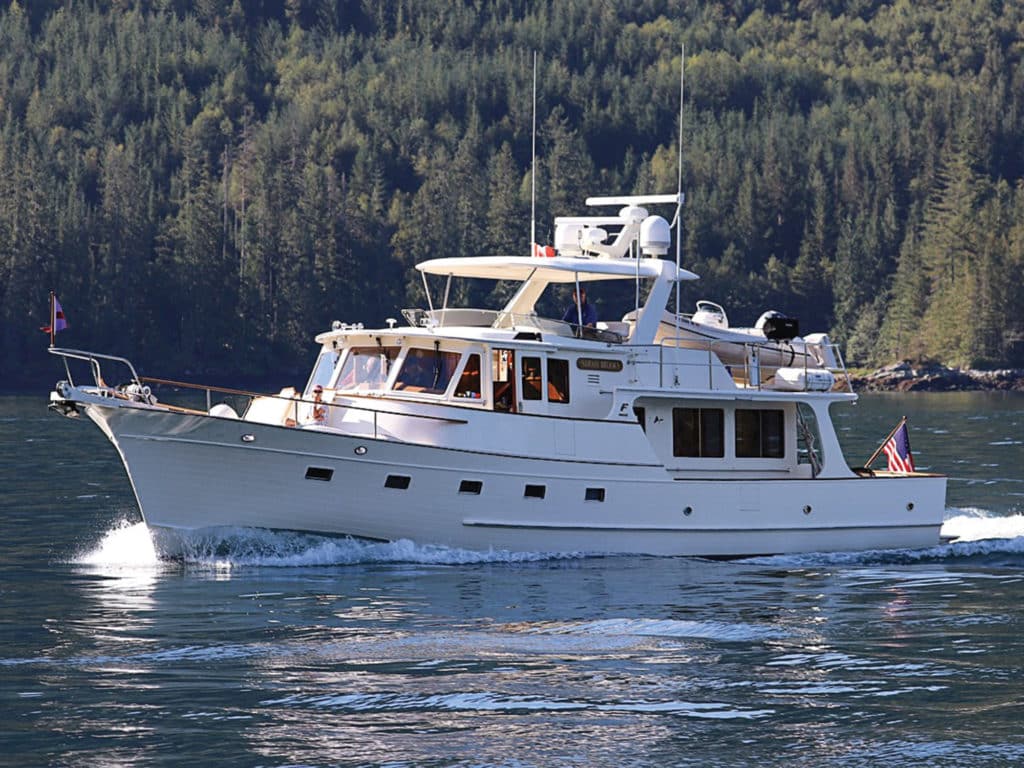
“We were sitting there at one of the stops, which was the private home of a member of the Seattle Yacht Club,” McColloch says. “It was 78 or 80 degrees without a cloud in the sky, and I asked him if he was having a good time. He said: ‘It’s warm and sunny, no bugs, no fog, and a lot of fun people. What’s not to like?’”
Some participants in those cruises are trying trawlers for the first time, he says, but they’re all sailors at heart.
“We all love boats,” he says. “That’s the central theme. It’s going out and finding another way to enjoy yachting and cruising with people who are like-minded.”
Reyers says that even his father has come to understand. He gave up sailing after a day when Reyers’ mother went overboard and landed between the boat and the dock on Lake Superior. “He tried to pull her out and couldn’t. He had to hook a halyard to her and winch it and pull her up,” Reyers says. “The boat was up for sale the next week. At some point, you just don’t have the energy and strength anymore.”
And all of the sudden, what Reyers was doing—messing around on trawlers in addition to sailboats—made more sense. Today, he’s planning two different charters: one aboard a Hunter 36 in the Apostle Islands, and the other in Desolation Sound aboard a 46-foot DeFever pilothouse trawler.
For Reyers, it’s all quite simple. “I always want to be able to boat,” he says. “I don’t want to quit.”
Upcoming NW Explorations Flotillas
Want to give a trawler a try as part of a flotilla charter? NW explorations has several in the planning stages, with most charterers looking ahead to at least 2023. “Most people who do these flotillas plan at least a year in advance, if not more,” says Emmelina Mojica, the charter manager at NW Explorations. The company offers three flotillas each year. The first is a 10-day trip to Princess Louisa Inlet on the British Columbia coast. The second is a two-week trip during the last week of September and first week of October to Desolation Sound. The third is an Alaska flotilla that runs from May through the end of August, with various legs. “There are six or seven legs that we offer, and they run from two to three weeks long. People can drop in and do a two-week segment,” Mojica says. “We have one client this year who has sailed around the world and they’re doing four of the legs, but most people do one leg.”
NW Yacht Group
In August 2021, NW Explorations merged with Cooper Boating, which has a charter fleet of sailboats, powerboats and catamarans in Canada, and is a Transport Canada Recreational Boating school. Both brands are now operating under the banner of NW Yacht Group with four locations: Vancouver, Sidney and Powell River, Canada; and Bellingham, Washington. § “Both now have a larger charter pool to draw from, with access to all four locations, and in-house maintenance, repairs and detailing,” the companies announced. “With a broader range of services and efficiencies in how we operate, we intend to establish a leadership position in our industry.”

